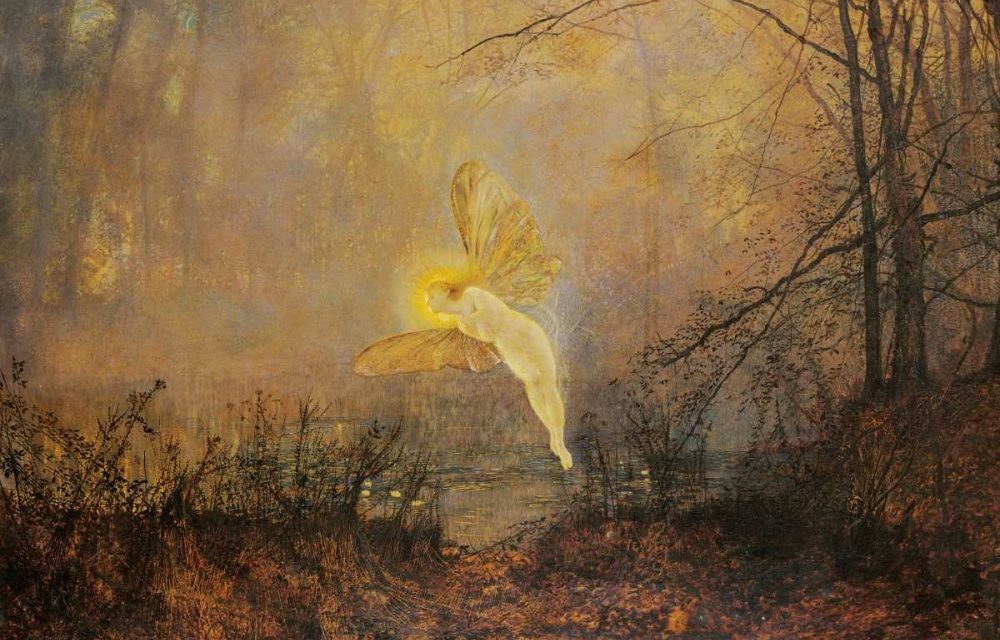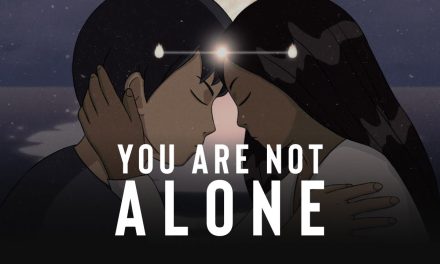Written by Geneen Marie Haugen / Parabola
“Go forth onto the land”—and reanimate the world
Descended from the indigenous hunter-gathers of the European arctic, I am an uprooted – or unrooted, or partially rooted – human being, currently re-homed in the American Southwest. Part of my family’s story was deliberately misplaced. Like the colonized indigenous people of North America and other continents, my Sami ancestors ingested profound shame for their “uncivilized” ways. Decades ago, when I started to wonder if there was something unspoken in my family story, I asked my mother if our Finnish ancestry might actually be Sami. She vehemently denied that we could be related to “those people.” Her brother hedged and told me it was possible, since it was thought that the family had “come from the north.” Neither of them could have imagined that DNA analysis and genealogical databases would break open the family secret. Before she died, my last surviving aunt told me quite matter-of-factly, “We are Laplanders. We’ve always known that.” She knew, but her children and the children of her siblings did not know. Almost all of those children, some already grandparents themselves, enact seasonal, generational rituals of hunting, fishing, and/or gathering – rituals that extend, through our grandmother’s line, back to (at least) the last ice age.
I do not know if my Sami ancestors were easily Christianized, or if they vigorously resisted the obliteration of their animistic, Earth-based spiritual tradition. I do not know how many generations have passed since my ancestors engaged in ceremonial drumming to commune with spirits or to enter an altered state of consciousness – or go through the portal to an otherworld for purposes of healing or vision. I do not know how far back they were enacting ceremonies at sites of sacred rocks or mystical lakes. My great-grandmother was a Sami midwife and healer before she and her husband and many children crossed the Atlantic, migrating to Michigan’s Upper Peninsula. My sister inherited a blood-letting horn that belonged to our great-grandmother. The blood of our mother’s lineage suffuses our bodies. I believe we also carry something like psycho-spiritual DNA, a kind of cellular ancestral memory. I have no “proof” of this, only a low-pitched, bodily intuition arising from my own affinity with the wilder Ones, with the living, many-voiced Earth, and with the mysteries of the world-behind-the-world.
Somewhere in mists of ancestral times, all of us are connected with people who once lived close to Earth, entwined with their places, entwined with the Others – people who participated and communed directly with plants and animals, dependent on Sun and rain, at the effect of storms and geological events. Many, if not most or all, of our distant ancestors once inhabited an animate world, infused with intelligences and souls. Clouds and stone spoke. Seas opened. Birds and snakes delivered messages. For some, eating bear opened the way to bear-mind. Perhaps honey was known as sacred elixir. Plants revealed themselves as characters with talents for healing or for inducing ecstasy. Dreams offered direction.
For modern people, an animate worldview might seem a superstitious, primitive perspective, or an artifact from an “over-active imagination” – a dismissive designation that was frequently directed toward me as a young person. Meanwhile, the common (and perhaps unconscious) dead-universe worldview allows for, and maybe even insists upon, a cannibalistic relationship with unfeeling forests, mountaintops, rivers, creatures, cultures.
Anguish over the diminishment of our world, the destruction of Earth’s life support systems, and the extinction of species is deep in our shared human psyche, though largely unexpressed. So many of us can only dimly imagine our way through the psychic and physical debris to a regenerated, thriving, Earth community. Yet the mysterious human imagination itself may be our best resource for experiential recovery of a vibrant, participatory, and wildly sacred Earth.

John Atkinson Grimshaw, Autumn: Dame Autumn Hath a Mournful Face
Once upon a time, waking visions, night dreams, messages from angelic beings or guardian spirits were regarded as true guidance, even for people of the Western world. In our own time, such guidance might be commonly regarded with skepticism or even ridicule. But there are still cultural alcoves – or side-channels meandering off the mainstream – where the significance of such encounters with the imaginal is valued, especially, perhaps, in culturally edgy terrain such as depth psychology, neoshamanism, art of all mediums, modern myth-telling, and soul-guiding.
Through the ecotone where the contours of the known world shapeshift into the mundus imaginalis, astonishing or fateful encounters may await the imagineer. Blue deserts, crenulated caverns, or dark-veined forests may suddenly appear, populated with devas, spirit bears, green angels, embryonic music, beasts that goddesses never invented, geniuses loci, inexplicable images or presences. In the imaginal world, anything and everything is – or could be – vividly alive, suffused in intelligence and agency. Poems might have legs. Wind might ask questions. Myths might enact themselves. Seasoned or intrepid explorers of the imaginal might return to the everyday world with images or experiences that make no sense to the ordinary mind, but which nevertheless become guiding, even life-altering, encounters. Carl Jung’s The Red Book documents his explorations in the imaginal – his “fantasies”– from which he wove his life’s work.
The imaginal world is breached or reached through the organ of perception called imagination – a mode of perception that lost value as the Western world privileged rational thought. Imagination as an organ of perception is a Western idea that figures prominently in the scientific method of renaissance man, Johann Wolfgang von Goethe – poet, playwright, polymath.
Scholar of Sufism, Henri Corbin, articulated the idea of the mundus imaginalis – or imaginal world – for the Western mind. Even those of us who were inoculated with the Western worldview can sense the possibility that a mode of perception has atrophied in the industrial, technological, scientific, abstract, monotheistic world.
Engaging intentionally with imagination can re-awaken access to the imaginal world, and may be a portal for re-awakening perception of the imaginal’s close cousin: the animate Earth. The imaginal and animate worlds are related, if not wildly the same. Perhaps the animate Earth is woven with the planetary body – while the imaginal expresses anywhere, any dimension, anytime.
Of course, concepts for imaginal world and animate world may not be necessary for more traditional peoples, or for a more-entwined-with-Earth psyche. Then, animate Earth is simply the world.
Even though all of us are descended from people who once lived close to Earth, knowingly dependent on – or interdependent with – the wilder Others, it’s not likely we could recover our indigenous selves in a weekend workshop, or even in a week, or become a “shaman” in a time frame, but perhaps we can open the way to an experiential, felt-sense of enlarged or deeprooted perception, for at least a few moments – a few enlivening moments that might then become a life-way. Though unless one is a trickster or sacred fool, it may be farfetched to attempt to reinhabit an indigenous self while simultaneously participating in the cannibal economy, where it is legitimate and even encouraged to steal from other life forms – including people, redwoods or plankton – on the way to accumulating more stuff and power.
Decolonizing our own minds may be a lifelong practice rather than quickly acquired, but psychic habits and habitual perceptions can be disrupted with intentional, radical enactments of imagination.
So much clamors for our attention, such noise, constant seductions and distractions from whatever is most valuable to us. I don’t engage with social media but even so the electronic images vying for my attention are relentless and seldom rewarding. Checking email or news is radically different from a deep listening to birds in migration or breeding, or the sound of water passing under ice, or the haunting bugle of a bull elk in rut. Even without social media, I struggle to turn my gaze away from the screen content that is provided for me in the background of even some alternate news sites. It’s ironic, because I simultaneously recognize that – via screens and headphones – we live amidst the greatest colonization of the imagination ever known. The images and ideas we ponder are often – maybe mostly – implanted through political or commercial advertising, which asks little of us except for a willingness to turn to stimulation provided by (usually) a screen, where we may be programmed to believe, to want, to dislike, to crave, to shun, to desire. Right now many of the images projected into the collective psyche are a nightmare of eco-degradation, governments unraveling, resource competition and violence – rather than a vision of a thriving Earth community, a collaboration of true visionaries, an honoring of the great mysteries of the cosmos. Who could fault anyone for regarding the nightmare as the only reality, the only option?
Naturally, I am subject to programming just like anyone. But perhaps I am fortunate to have familiarity with a potent and primal antidote – a widely available antidote.

Alexandre Buisse, Suorvajaure from Vakkotavare, in Stora Sjöfallet Park, northern Sweden. (Wikipedia)
I grew up a little wild, and have always sought wildish, mystical thresholds in so-called nature where I could find solace and solitude to track my own wandering, mytho-poetic thoughts, as well as fascinations with the wilder Others. From the beginning, the wildish Earth was leafed and winged magic. I felt the nearly-excruciating revelation of waterlilies, butterflies, or the Milky Way as if they were guides toward a possible world, one where all human beliefs and actions were coherent with such splendor – though I would not have had that language then. As if these astonishing presences could be guides toward the magnificence that even human beings, with all of our faults and sorrows, might express and reflect. In my “over-active imagination,” the possible human world, and the human-Earth relationship, were so much more glorious than anything I observed in school or home or church. And the wild Earth was not an unfeeling, disinterested backdrop to our lives, but the breathing, expressive presence in which we were entangled. The world was filled with interactivity. The mundus imaginalis was very near. But of course I did not have the language then, only a felt-sense like a guiding compass, a life-way.
One antidote to the colonization of the mind is the wild imagination. Cultivating the extraordinary human capacity to imagine alternate possibilities is, I believe, at least part of an essential navigation strategy for our times of multiple crises and ecological peril. Becoming conscious of the power of imagination in our lived collective experience may be an evolutionary movement, a call to participate with an emerging mode of human consciousness that may have many names. My own neologism is homo imaginans.
Every species occupies a niche relative to its ecosystem, a niche that is intimately connected with the unique abilities of that species. The ecosystem inhabited by the human species is now the whole planet. To my senses it appears that our seemingly-unique mode of forward-seeing imagination may suggest the ecological niche of humans in the planetary ecosystem. The human imagination has brought us violins and nuclear weapons, Hubble and fracking, democracy and despotism, and every other human invention or creation – changing the world over and over again, with consequences that perhaps no one fully envisioned.
Declaring the all-encompassing, foundational importance of imagination in her epic poem, Rant, Diane di Prima writes, “THE ONLY WAR THAT MATTERS IS THE WAR AGAINST / THE IMAGINATION / ALL OTHER WARS ARE SUBSUMED IN IT.” Let us pause for a moment to ask, who controls the images that allure us, that may direct our efforts toward a better car, a holiday, new technology? Who is streaming the script? Without the vigorous occupation of collective imagination by visionary persons who have no industrial, consumerist, or military agenda, planetary well-being is under siege. We need images of alternatives to endless war and ecocide, we need images that guide us toward purposeful creation, toward human/Earth coherence and sacred intimacy.
Intentional, ecologically-coherent enactments of imagination can help us not only decolonize the mind, but also revive animist perception – a perception that seems to weave through indigenous cultures, perhaps including the perceptions of our own distant ancestors. Persons for whom the world is ensouled, for whom the wilder Others are suffused with agency and intelligence, are more likely to resist the on-going corporate, colonizing agenda. Political soap opera – as alluring and distressing as it is – may also be theater that distracts from the on-going diminishment of Earth’s life support system. It’s challenging to pull away from the narratives that are being determined for us, and to engage, instead, directly with the wild Earth, or with the deep imagination.
When the troubles of the world overwhelm me, when I can’t find my way out of the distressed hamster wheel of my own mind, I take myself out onto the land with wild prayers for Earth’s imagination to find me. I go out as if everything – juniper, Navajo sandstone and cloud – is alive, intelligent, and aware of me. Today I stepped across a threshold with my longings to sing praise for the world even while feeling despair. My voice wobbles with perhaps an unfortunate resemblance to amateur throat singing. But there are no human people to hear, so I carry on, praising the deconstructing beauty of lichen turning sandstone back into sand, singing for pinyon, cacti, and cryptobiotic soil who catch the nectar of gentle snowmelt. It can be an effort to keep my attention tuned outward, toward the wilder Others, but like a meditation practice, I keep returning to praise for the delicious curve of the far mesa, a pair of ravens, the bobcat tracks in a patch of snow. Dark basalt boulders gather in small herds. A few boulders the size of bear cubs balance on pale sandstone legs. How long have they been poised like that while support erodes beneath them? I turn my head, praising mountains in the far distance, praising immense ancient winds that blew these pale mesas into being. Earth has taught me to sing; sometimes – not always, not even usually, but sometimes – it seems to be her voice in my throat. For a spell – like Whitman – I contain multitudes.
When I look again, the balanced boulders are still motionless, but some in the basalt herd have cleverly shifted places while my gaze was turned. A coyote slinks in and out of view.
Perhaps our distant ancestors had no concept for imagination; perhaps they had no words for wild. Perhaps the contemporary concept of “re-wilding” would be utterly baffling. The indigenous mind is presumably less shaped by the modern worldview, less programmed with institutionalized or corporatized thinking. But even the modern mind can still access more free-ranging, wilder perceptions. We can sometimes find that portal through radical, purposeful acts of imagination.
I don’t know how the original human people of this land participated with the Others. I don’t know their sacred practices or their ways of knowing. I am not trying to mimic or appropriate from them or anyone else, including my own ancestors. But it seems that the wild Earth has invited me to praise, to imagine, and to be ceaselessly amazed – even by the great storms, by the elementals of floods and fire – and sometimes to grieve out loud, or rage, as if it matters to the wilder presences including human beings. So I go as if there are listeners. Sometimes an organ of perception opens, and the dreaming-sigh of Earth is loud and palpable.
Here is a practice that anyone can enter. Go forth onto the land – it’s best if this is wildish land, wildish nature. Go as if every presence is aware of, and participatory with, you. You don’t have to be convinced that the wilder Others areactually aware of you; you can simply venture out as if such a thing might be true. An experiment. A kind of pretending. An intentional recalibration of perception. Speak out loud to the Others – especially speak or sing praise and wonder – as if it might matter to them. Offer attention to the world, noticing in the most intimate sensual details what happens in the field you inhabit with them. Notice what shifts in the phenomenal world, and also attend what shifts in perception. Notice what images or other impressions might come, perhaps pawing out of the shadows and into awareness. Perhaps, just perhaps, the images or impressions that arise are Earth or the wilder Others speaking – not through the ears, but through the organ of perception called imagination. ♦
















